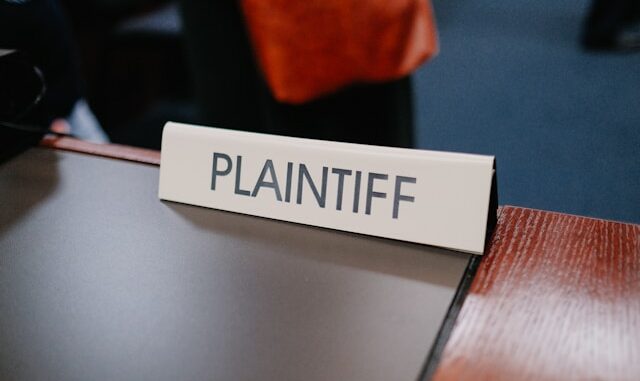
Motor vehicle accidents can leave you with physical injuries, emotional distress, and financial burdens. If you’re seeking compensation for your losses in Ontario, understanding the litigation process is crucial. While each case is unique, here’s a general outline of the steps involved:
1. Initial Consultation with a Lawyer:
The first step is to consult with a personal injury lawyer specializing in motor vehicle accidents. This consultation is usually free and allows you to discuss the details of your accident, injuries, and potential legal options. The lawyer will assess the strength of your case and advise you on whether to proceed with litigation.
2. Investigation and Gathering Evidence:
If you decide to pursue a lawsuit, your lawyer will begin investigating the accident. This may involve gathering evidence such as:
- Police reports
- Witness statements
- Medical records
- Accident reconstruction reports
- Employment and income records
3. Filing a Statement of Claim:
Your lawyer will prepare and file a Statement of Claim with the court. This document outlines your allegations against the at-fault party, the nature of your injuries, and the damages you are seeking.
4. Filing a Statement of Defence:
The defendant (usually the at-fault driver’s insurance company) will respond to your Statement of Claim by filing a Statement of Defence. This document typically denies liability or disputes the extent of your injuries and damages.
5. Discovery Process:
The discovery process allows both parties to exchange information and evidence relevant to the case. This can include:
- Exchange of Documents: Both parties exchange documents such as medical records, police reports, and expert opinions.
- Examinations for Discovery: Each party is questioned under oath by the opposing lawyer. These examinations are recorded by a court reporter and can be used as evidence later.
6. Mediation:
Ontario courts often require parties to attend mediation before a trial. Mediation is a voluntary and confidential process where a neutral third party (mediator) helps the parties try to reach a settlement agreement.
7. Pre-Trial Conference:
If mediation is unsuccessful, a pre-trial conference may be scheduled. This conference allows the judge to assess the case, encourage settlement, and set a trial date if necessary.
8. Trial:
If no settlement is reached, the case will proceed to trial. During the trial, both sides will present evidence, call witnesses, and argue their case before a judge or jury. The judge or jury will then make a decision on liability and the amount of damages awarded.
9. Appeal:
If either party is dissatisfied with the trial outcome, they can appeal the decision to a higher court.
Timeline:
The length of the litigation process varies depending on the complexity of the case and the court’s schedule. It can take anywhere from several months to many years to resolve a motor vehicle accident lawsuit in Ontario.
Important Considerations:
- Statute of Limitations: Ontario has a two-year limitation period for filing a lawsuit after a motor vehicle accident. It’s crucial to consult with a lawyer as soon as possible to avoid missing this deadline.
- Insurance Coverage: Your own insurance policy may provide benefits to cover medical expenses, income replacement, and other costs while your lawsuit is ongoing. These are called Accident Benefits.
- Legal Representation: Hiring an experienced personal injury lawyer is highly recommended to navigate the complex legal process and protect your rights.
Remember, this is just a general overview of the litigation process. Each case is unique, and your lawyer will guide you through the specific steps involved in your situation.
